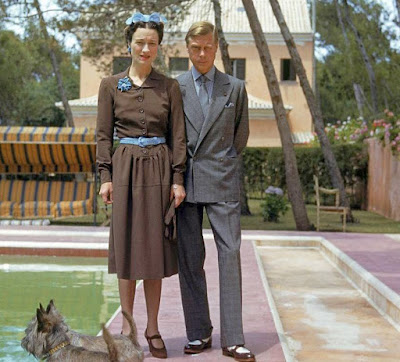 |
Duke of Windsor
shoes
|
The spectator shoe
(British English: co-respondent shoe) is a style of low-heeled,
oxford, semi-brogue or full brogue constructed from two contrasting
colors, typically having the toe and heel cap and sometimes the lace
panels in a darker color than the main body of the shoe.[1][2][3]
This style of shoe dates from the nineteenth century but reached the
height of popularity during the 1920s and 1930s.
Common color
combinations include a white shoe body with black, brown or tan toe
and heel caps, but other colors can be used. The spectator is
typically an all leather shoe, but can be constructed using a canvas,
mesh or suede body. The spectator was originally constructed of
willow calf leather and white buck or reverse calf suede. The white
portion was sometimes made from a mesh material, for better
ventilation in hot weather.
The saddle shoe,
another style of two-tone oxford shoe, can be distinguished from the
spectator shoe by noting the saddle shoe's plain toe and distinctive,
saddle-shaped decorative panel placed mid foot.
John Lobb, the
famous English footwear maker, claimed to have designed the first
spectator shoe as a cricket shoe in 1868.
In the 1920s and
1930s in England, this style was considered too flamboyant for a
gentleman, and therefore was called a tasteless style. Because the
style was popular among lounge lizards and cads, who were sometimes
associated with divorce cases, a nickname for the style was
co-respondent shoe, a pun on the colour arrangement on the shoe, and
the legal description of a third party caught in flagrante delicto
with the guilty party in a case of adultery. Wallis Simpson was famed
for wearing this style, although it was said that she was an
adulteress and that it was Edward VIII who acted the part of
co-respondent.










No comments:
Post a Comment